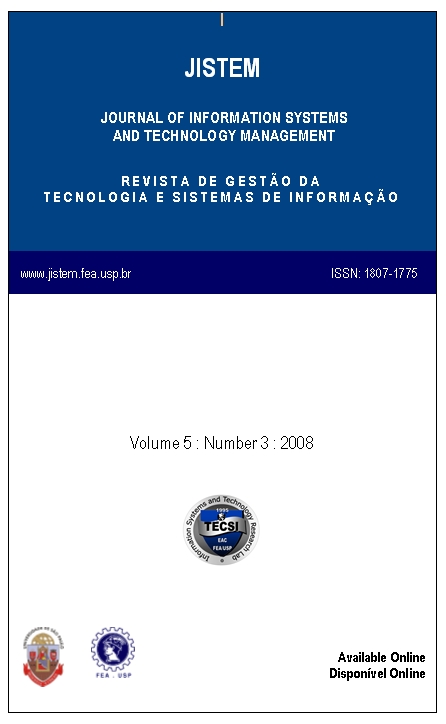Wimax traffic model based on time series for forecast future values of traffic
DOI:
https://doi.org/10.4301/S1807-17752008000300005Palavras-chave:
ARIMA, Correlation, Networks of communications, Time series, Traffic modelsResumo
The objective of this research is to demonstrate that the time series are an excellent tool for modeling of data traffic on networks Wimax. To achieve this goal we used the Box-Jenkins method, which is described in this article. The traffic modeling Wimax through correlated models such as time series allow you to adjust much of the dynamic behavior of the data in an equation, and based on this estimate future values of traffic. This is an advantage for planning coverage, reservation-tion of resources and the realization of a more timely and efficient in an integrated manner at different levels of the hierarchy of functional data network Wimax. As a result of the investigation was a model of traffic ARIMA Order 18, which made traffic forecasts with values of root mean square error relatively small, for a period of 10 days.Downloads
Os dados de download ainda não estão disponíveis.
Downloads
Publicado
2008-01-01
Edição
Seção
nd172996061
Como Citar
Wimax traffic model based on time series for forecast future values of traffic . (2008). Journal of Information Systems and Technology Management, 5(3), 505-525. https://doi.org/10.4301/S1807-17752008000300005



